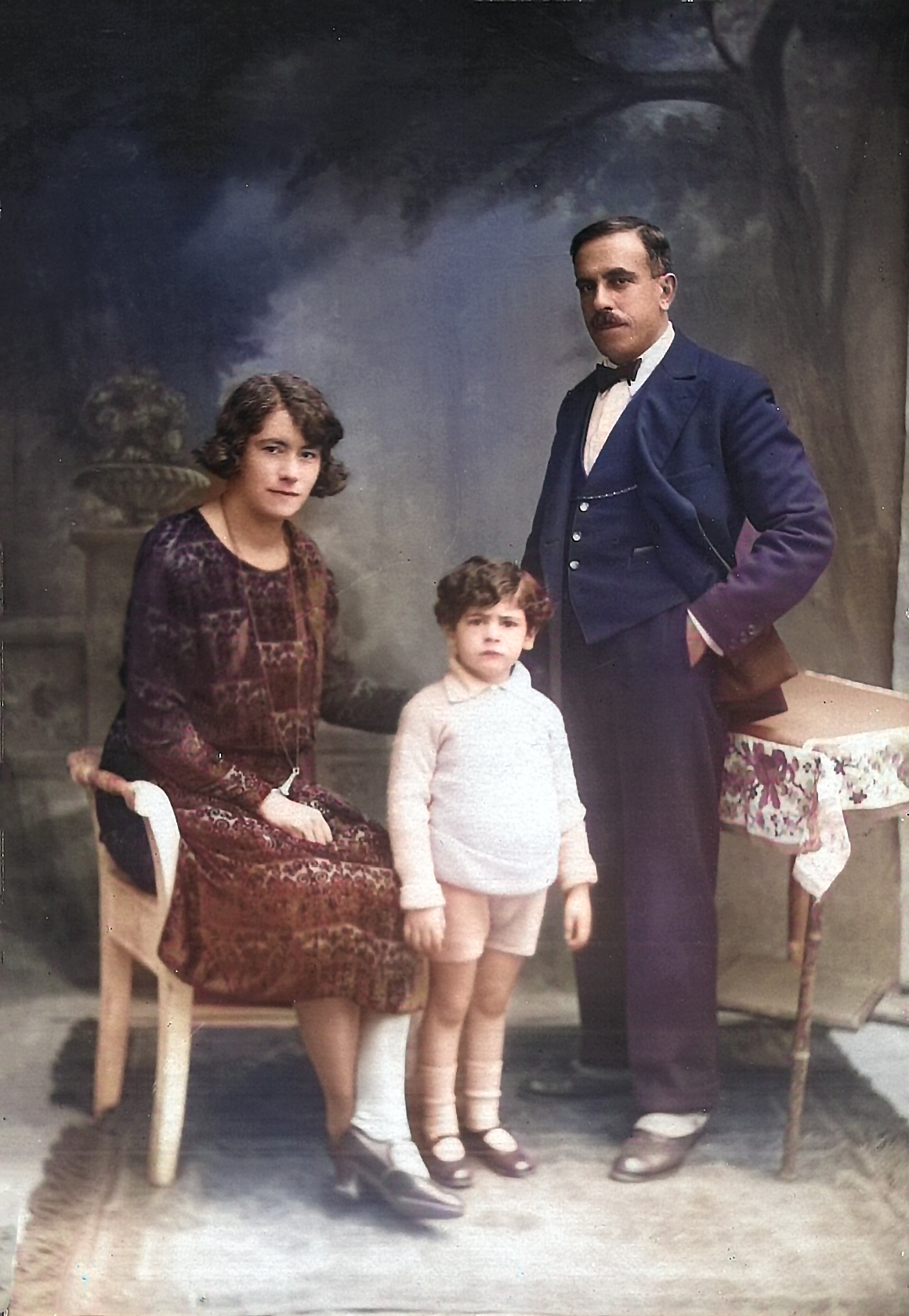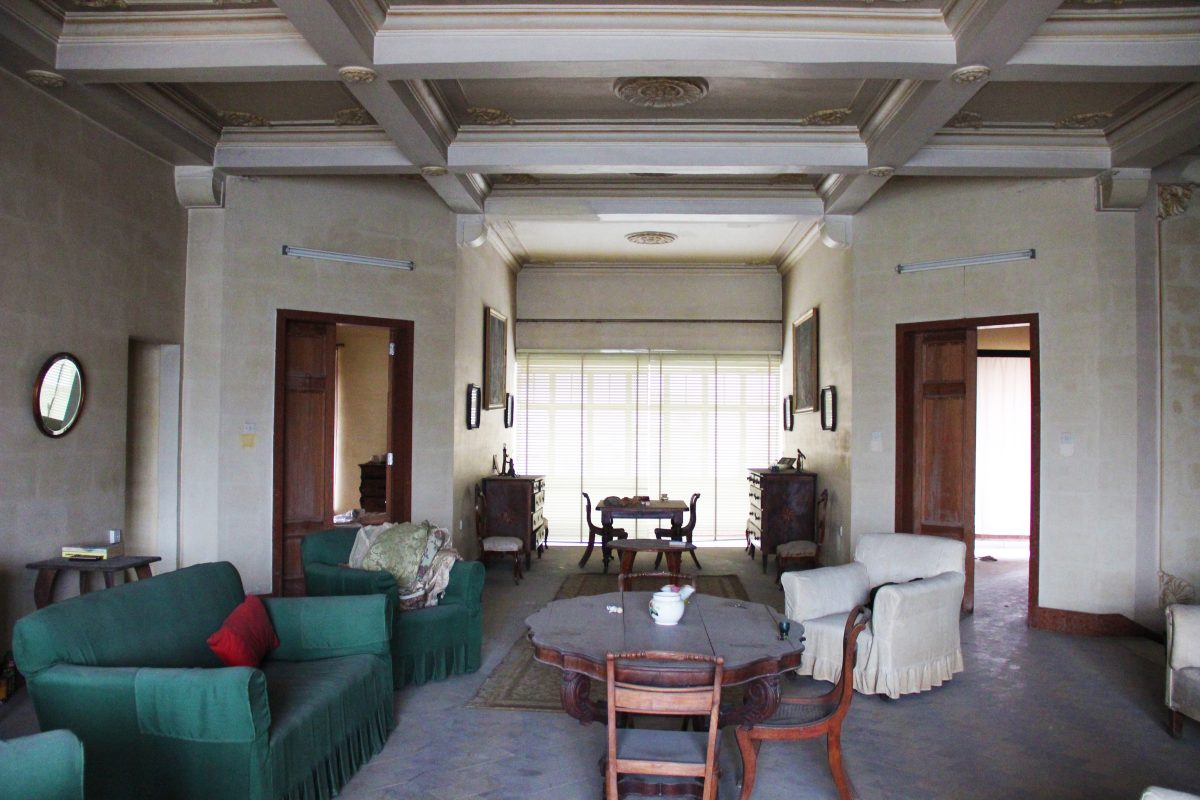By David Ellul
Born on August 26th 1888 and residing at Valletta, Gustave Romeo Vincenti, was the son of Luigi Vincenti, a wealthy trader and merchant who imported goods such as wines, spirits, cigars and cigarettes in Malta during the late 19th and early 20th Century.

Although no family members of Gustave were architects, he showed interest in the profession from a young age and was one of the first students who in 1910 graduated with a Bachelor of Engineering and Architecture from the University of Malta. Besides his architectural inclinations, his knowledge in commerce within a business-oriented family gave Vincenti an additional skill; that of an entrepreneur and merchant. Unlike other architects of his time, he pushed the profession’s boundaries in his role as a perit to that of a merchant and developer, demonstrating that he did not simply prioritise on maximising the income of a project, but also focused on good design and high-quality living.
His stylistic revolution is also represented in his business acumen towards architecture and in the early 1920s Gustave merged his entrepreneurial spirit with his architectural skill by establishing his own firm by the name of Vincenti Estates. Gustave purchased land, developed it and eventually sold or rented them out portraying himself as a business-driven architect within the construction industry.
In his entrepreneurial endeavors, Vincenti was a smart businessman who also had a good taste and a great respect for the environment. Although in his personal life Vincenti was no spendthrift, the architecture and detailing of the buildings he owned cost him a large amount of money.
Using his contacts and experience as a merchant, Gustave imported practically all his building requisites, mostly from the United Kingdom, for the purposes of testing such new materials in the construction industry. He had introduced in Malta the metal window casements and reconfigured the internal spatial layout of building to make all rooms independent. From designing large-scale condominia to small tradesmen’s dwellings, his commercial affiliations also translated into meticulous attention to interior detail, therefore maintaining a holistic approach throughout; clearly demonstrating a man with a zeal for precision, quality and aesthetics.

The 1920s and 1930s was the period of Vincenti’s peak and brilliant career where he was actively engaged in works of a varied nature that were entrusted to him by his wide range of clients. It was during this time that Vincenti proved himself as a capable practitioner within the Maltese architectural scene, through the execution of various Art Nouveau buildings throughout newly developed residential areas, in particular Sliema. 1(2) 1(3) His architectural inclinations were predominantly towards the modern Liberty Style in Italy. Later in his career he experimented with the emerging style of Modernism where he developed a new architectural language using new materials. He made history when in 1936-1940 he, on his own, erected the a palatial block of apartments with underlying shops within the capital city of Malta. Forming part of the grid pattern of Valletta, this project was the culmination of Vincenti’s architectural and business endeavours which is still known as Vincenti Buildings to this day. 1(4) 1(5) 1(6)

On the 29th December 1921, Gustave Vincenti married Maria Stella and on the 14th of January 1927 their only son Hilaire was born. In 1929 the Vincenti family resided in their newly constructed house, No. 1, Harper Lane Floriana, designed and built by Gustave himself.
Still living in Floriana during the Second World War, Vincenti experienced a tremendous deal of destruction even in his own properties as a result of the Axis’ aerial bombings.

Following the Second World War, Vincenti moved to St. Julian’s to live in his newly constructed house Palazzina Vincenti were he spent the rest of his life. Having lived a successful and affluent life, his duty towards the community was not forgotten as he was a great benefactor not only to institutions and organisations, such as the Church, but also to several people on an individual level. He had also left his share of the estate to charitable institutions across Malta and Gozo in his will.
On the 25th April 1974, Gustave passed away at Palazzina Vincenti at the age of eighty-five leaving a legacy of architectural works that portray his versatile and progressive styles. His works alone signify the evolution of Maltese architecture towards a modern aesthetic that broke away from the Neo-Classical style making him one of Malta’s most accomplished and innovative architects of the 20th century.

Palazzina Vincenti
In 1948 Vincenti set his eyes on a bombed house bound between two roads, Main Street and Ġorġ Borg Olivier Street (previously known as Grenfell Street) along the St. Julian’s promenade, where he purchased the property and an adjacent plot of land. Dating approximately to the early 1800s, this two storey house had its main entrance at Main Street overlooking a large back garden which, before the construction of at the time Grenfell Street, had direct access to the sea.
The destruction the Second World War left behind did not stop Vincenti from pursuing his entrepreneurial endeavors within a Post-War Malta. Erected from the ashes of this house, Vincenti sought to build what could be considered as one of his greatest masterpieces, his personal villa Palazzina Vincenti.
For his new villa Vincenti sought to experiment with the possibilities reinforced concrete brought with it. His inspiration was drawn from the book found in his personal library, Gli Elementi dell’ Architettura Funzionale, where several modernist buildings derived from the Bauhaus movement are depicted. Casa Römer designed by architect Karl Schneider in Germany (1927-1928) seen in page 258 was bookmarked by Vincenti. The architecture of this building might have enticed Vincenti to seek a new architectural language for his own house portraying a status of grandeur and avant-garde aesthetics which created a paradigm for a reconstructed Malta.

Having its main entrance from Main Street, St. Julian’s, Palazzina Vincenti is set on a podium of green garages, elevated from Borg Olivier Street overlooking Balluta Bay. The view towards this bay is exploited by receding the building to form terraces, while large doors and windows, supported by curved reinforced concrete beams and flat arches, give a panoramic view towards the Mediterranean. The void created through the receded physical form adjures admiration. Sculpted within the building line, it evokes an artistic expression, resulting in a masterpiece of architecture defined by pure geometric volumes. Vincenti’s affiliation with the circle and square motifs, applied to his Art Nouveau buildings, are manifested in the three-dimensionality of the structure through the geometric juxtaposition of circular curves and cubist projections. 
A salient element within the façade in Ġorġ Borg Olivier Street, is the semi-circular cantilevered terrace at first floor acting as a focal point of the whole composition. Initial concept drawings indicate that Vincenti had opted for the construction of the terrace using traditional means composed of stone slabs supported by two columns. By using reinforced concrete, Vincenti’s execution of the cantilevered terrace freed the space underneath, giving the building lightness and openness. The construction of a smaller cantilevered terrace on the roof level, creates a stepped aesthetic from the main platform at ground floor to the top thus retaining the visual focus onto the large cantilevered terrace.


The symmetric design of the façade along Main Street was derived from Vincenti’s affiliation of regional architecture. As he had done in his Art Nouveau buildings, he redefined the Maltese balcony this time within the Modernist context by constructing it in reinforced concrete and metal apertures. Imported from Rustpoof Metal Windows Co. Ltd, Vincenti emphasised that the metal casements of the balconies should be top hung “as all balconies in Malta are wooden ones and the front part are all top hung”. All metal apertures are divided into vertical portions, embellished with smaller square segments on the top part. The whole composition and the thin profile of the apertures are an integral part to complement the modernist style and elegance of the building. The simplicity of the tubular railings implemented by Vincenti along the terraces and balconies heighten the visual focus of the solid volumes of the building.

A spacious interior complements Vincenti’s affluent status. Grand in scale and architecture, this foyer is supported by a series of reinforced concrete beams spanning along all four sides of the space on all levels. To compliment this grand space, Vincenti embellished the ceiling with cornices and ceiling roses formed in plaster and custom made by the sculptor and decorator Joseph Galea from Rabat, Malta.


At the centre of the ground floor hall is the staircase, imposing as one would expect. Here Vincenti did not cut short from using reinforced concrete to emphasize the grandeur envisioned for this villa. Clad in white Carrara marble with risers made of Verona red marble, the staircase splits into two separate flights on either side, evoking a sense of classical monumentality in a modern contemporary design. This dynamic form conjures a great resemblance to Frank Lloyd Wright’s concrete experimentations, acting as a centerpiece in the midst of the house. The use of concrete is also evident in formulation of platers at the front terrace and another two grand staircases clad in yellow terrazzo, leading from this same terrace to the driveway on Ġorġ Borg Olivier Street.



Having known that the pervious house had direct access to the bay, Vincenti used this fact to obtain a permit to construct a subterranean tunnel connecting Palazzina Vincenti to a proposed pier. A few years after the completion of Palazzina Vincenti, permission for the excavation of a tunnel and the construction of a reinforced concrete pier within Balluta Bay was granted.


Adjacent to the villa, on either side, are another two houses, No.186 Main Street and No.6 Borg Olivier Street, which are designed in a muted Modernist aesthetic in comparison to the Palazzina itself. No.186 was built for his son, Hilaire and included an office which was interconnected with Palazzina Vincenti. The aim for this was so that Gustave and Hilaire would have shared the same office for visiting clients. The architectural influence for No.186 and No.6 was drawn from the works of architect Victor Bourgeois in Belgium and Casa E. Bonsel, 1925, designed by architect Andrè Lurçat in France. Here Vincenti also includes two concrete balconies on two levels which are connected to form one projection acting as a focal point of the whole composition. Interestingly the apertures of these two dwellings differ slightly from those of the Palazzina due to the inclusion of green and yellow stained glass fitted within the small, glazed elements crowing the length of the windows. This colour combination used within the stained glass seem to be one Vincenti’s favorite throughout his architectural designs where such arrangement blends in with the green garages and the yellow hue of the Maltese limestone.
Palazzina Vincenti and the adjacent houses stand as Vincenti’s architectural tour de force in the shift towards Modernism. These gems represent the culmination of his entrepreneurial and architectural achievements, embodying wealth and success through progressive design and innovative materials. They can be considered as an application model of reinforced concrete, one of the earliest examples of domestic architecture to utilise such material. By taking full advantage of the possibilities that reinforced concrete brought with it, Vincenti’s artistic expression was freed from the limitations of traditional materials.

A planning application was submitted in 2021 to demolish these buildings and erect a hotel instead. The Planning Authority has since then issued a temporary Emergency Conservation Order (ECO) valid for one year which has then been extended for another year ending in December 2023. Although the Planning Authority has issued a temporary ECO, the application is still ongoing and the fate of Palazzina Vincenti is still unknown.
References
- Ellul, D., (2022), Gustave R. Vincenti – An Architectural Legacy, Kite Group, Malta.
- Ellul, D., (2018), Gustavo R. Vincenti’s contemporary approach towards 20th century Maltese architecture as revealed by his archives. University of Malta; Faculty for Built Environment. Department of Architecture and Urban Design.
(photos: David Ellul)

